Discover a comparison of the most popular home automation hubs on the market today to find out which one is best home automation hub for you.
How interesting is this comparison of home automation hubs?
To unify a smart home, i.e. to bring different devices together in a single interface, generally if these are not WIFI devices but devices communicating over Z-Wave, Zigbee, EnOcean, 433 MHz or any other home automation technology, it is necessary to purchase a home automation controller.
Therefore, to try and help you in your choice, check out my comparison about the best home automation hub.
| Home Assistant Green | Jeedom Luna | Homey | Aqara Hub M2 | Sonoff ZB-BRIDGE-P | Moes ZHUB | Home Center 3 Lite | Eedomus+ | |
|---|---|---|---|---|---|---|---|---|
| GENERAL INFORMATION | ||||||||
| Brand | Nabu Casa | Jeedom | Athom | Aqara | Sonoff | Moes | FIBARO | Connected Object |
| Country | 🇺🇸 | 🇫🇷 | 🇳🇱 | 🇨🇳 | 🇨🇳 | 🇨🇳 | 🇵🇱 | 🇫🇷 |
| Price | 109€ | 199€ | 399€ | 59.99€ | 33.99€ | 33.99€ | 171.65€ | 199€ |
| Shop | BUY NOW | BUY NOW | BUY NOW | BUY NOW | BUY NOW | BUY NOW | BUY NOW | BUY NOW |
| Subscription required | No | No | No | No | No | No | No | No |
| Subscription Premium | Yes | Yes | No | Yes | Yes | Yes | No | Yes |
| Easy to use | ⭐ | ⭐ | ⭐⭐⭐⭐⭐ | ⭐⭐⭐⭐⭐ | ⭐⭐⭐⭐⭐ | ⭐⭐⭐⭐⭐ | ⭐⭐⭐⭐ | ⭐⭐⭐ |
| TECHNOLOGIES | ||||||||
| Zigbee Standard | In option | ✅ | ✅ | ✅ (Aqara devices only) | ✅ (Sonoff devices only) | ❌ | ❌ | In option |
| Zigbee Tuya | In option | ✅ | ✅ | ❌ | ❌ | ✅ | ❌ | In option |
| Thread | In option | ❌ | ✅ | ❌ | ❌ | ❌ | ❌ | ❌ |
| Matter | In option | ❌ | ✅ | ❌ | ❌ | ❌ | ❌ | ❌ |
| Z-Wave+ | In option | ✅ | ✅ | ❌ | ❌ | ❌ | ❌ | ✅ |
| EnOcean | In option | In option | ❌ | ❌ | ❌ | ❌ | ❌ | In option |
| KNX | In option | In option | In option | ❌ | ❌ | ❌ | ❌ | ❌ |
| Somfy RTS | In option | In option | In option | ❌ | ❌ | ❌ | ❌ | In option |
| Somfy io Homecontrol | In option | In option | ❌ | ❌ | ❌ | ❌ | ❌ | In option |
| X2D Delta Dore | In option | In option | ❌ | ❌ | ❌ | ❌ | ❌ | In option |
| Chacon/DiO 1.0 | In option | In option | ✅ | ❌ | ❌ | ❌ | ❌ | In option |
| 433 MHz | In option | In option | ✅ | ❌ | ❌ | ❌ | ❌ | In option |
| Infrared | ❌ | ❌ | ✅ | ✅ | ❌ | ❌ | ❌ | ❌ |
| TECHNICAL CHARACTERISTICS | ||||||||
| Network connection | Wifi / Ethernet | Wifi / Ethernet | Wifi | Wifi / Ethernet | Wifi | Wifi | Wifi | Ethernet |
| USB Ports | 2x USB | 1x USB | ❌ | ❌ | ❌ | ❌ | ❌ | 2x USB |
| Bluetooth | ❌ | ✅ | ✅ | ✅ | ❌ | ❌ | ❌ | ❌ |
| Emergency battery | ❌ | ✅ | ❌ | ❌ | ❌ | ❌ | ❌ | ❌ |
| Consumption | 3W | 2W | 2W | No information | No information | No information | 4W | 1W |
| EVOLUTIVITY | ||||||||
| USB Extensions | ✅ | ✅ | ❌ | ❌ | ❌ | ❌ | ❌ | ✅ |
| Functions | ⭐⭐⭐⭐⭐ | ⭐⭐⭐⭐⭐ | ⭐⭐⭐⭐ | ⭐⭐ | ⭐⭐ | ⭐⭐⭐ | ⭐⭐⭐ | ⭐⭐⭐⭐ |
| Updates | ✅ | ✅ | ✅ | ✅ | ✅ | ✅ | ✅ | ✅ |
| Local API | ✅ | ✅ | ✅ | ❌ | ❌ | ❌ | ❌ | ✅ |
| Cloud API | ✅ | ✅ | ✅ | ❌ | ❌ | ❌ | ❌ | ✅ |
| VOICE ASSISTANTS | ||||||||
| Amazon Alexa | ✅ | ✅ | ✅ | ✅ | ✅ | ✅ | ✅ | ✅ |
| Google Home | ✅ | ✅ | ✅ | ✅ | ✅ | ✅ | ✅ | ✅ |
| Homekit | ✅ | ✅ | ✅ | ✅ | ❌ | ❌ | ❌ | ✅ |
| USER INTERFACE | ||||||||
| Local use | ✅ | ✅ | ✅ | ❌ | ✅ | ❌ | ✅ | ✅ |
| Interface ergonomics | ⭐ | ⭐ | ⭐⭐⭐⭐⭐ | ⭐⭐⭐⭐ | ⭐⭐⭐⭐ | ⭐⭐⭐⭐⭐ | ⭐⭐⭐ | ⭐ |
| Personalization | ✅ | ✅ | ✅ | ❌ | ❌ | ❌ | ✅ | ✅ |
| Android/iOS apps | ✅ | ✅ | ✅ | ✅ | ✅ | ✅ | ✅ |
What is the best home automation hub?
The answer is: it depends on the user’s profile.
To give you a clearer idea, here is a list of advantages, disadvantages and opinions on the different home automation hubs.
Advantages and disadvantages of the Tuya Moes hub
A user who does not want to complicate his life with simple configurations and who wants to mix brands to have the freedom to customise his smart home might be interested in using a Tuya Smart Life hub.
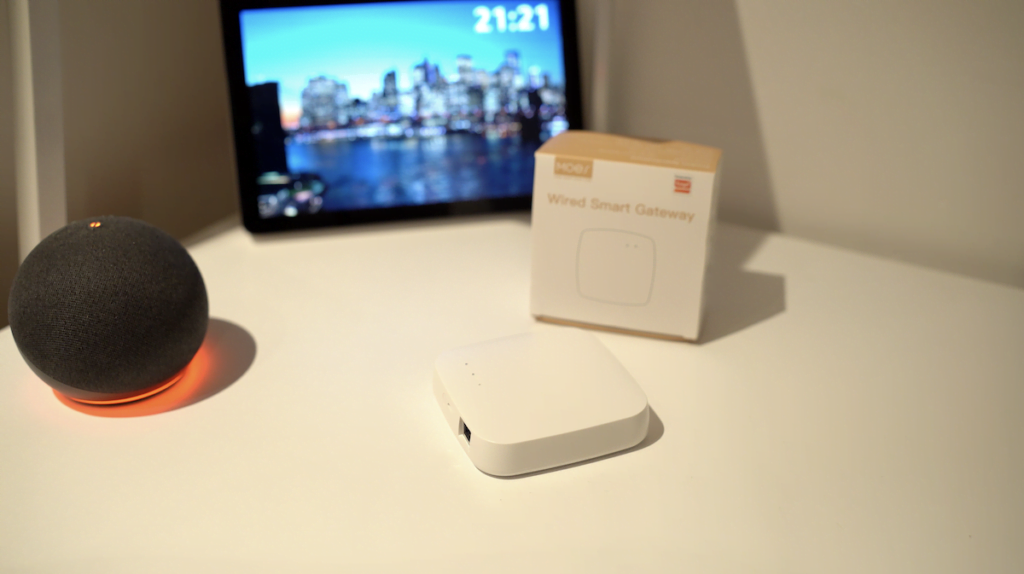
But remember that you can only use smart devices that have the Tuya logo on the packaging, which means they are compatible with the Tuya ecosystem.
Advantages
- Compatibility: many brands on the market that are part of the Tuya ecosystem (Lidl, Nous, Moes, Immax, etc.) can be combined.
- Simple application: the SmartLife application is very easy to use to control the smart home and is one of the most downloaded in the world.
- Price: compared to the different hubs on the market, the price of a Tuya hub like the Moes brand is very cheap.
- Evolution: being compatible with the entire Tuya ecosystem, it enjoys many technical improvements and new device integrations.
Disadvantages
- Internet dependency: if you do not have Internet, you lose control of your smart home at this time.
- Limited functions: You can create simple scenes and access general functions, but it is not comparable to advanced solutions such as Home Assistant or Jeedom.
Advantages and disadvantages of the Jeedom Luna hub
Jeedom is an open source home automation software that can be downloaded and installed on a Raspberry PI.
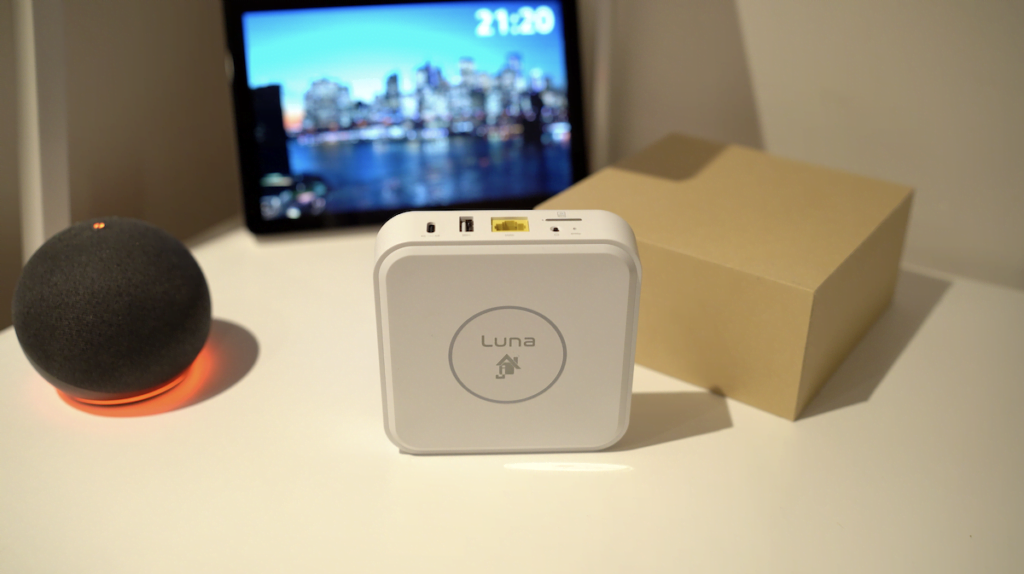
But Jeedom Luna is a hub that makes your life easier, integrating this software and several interesting technical features.
This hub integrates Zigbee, Z-Wave, Bluetooth and WIFI, making it very powerful for the installation of a wide range of devices on the market.
Advantages
- Complete home automation hub: Integrates several popular technologies (Zigbee, Z-Wave 700, Wi-Fi) and good technical skills.
- Advanced compatibility: You can mix different smart devices on the market and bring everything together with the same interface with Jeedom Luna.
- Works locally: if the internet fails, your smart home will still work with Jeedom because its intelligence is inside the hub and not in the cloud.
- Emergency battery: in the event of a power outage, Jeedom Luna continues to work for several hours.
- Evolutive: since 2014, Jeedom has always followed market trends to integrate new features and compatibility.
- Open Source: the community also collaborates to improve the Jeedom solution.
Disadvantages
- 1 USB port: you can only use one USB key with Jeedom Luna (or buy a compatible USB multi-hub).
- Difficulty: Jeedom is powerful but not easy to use and you need to read the documentation in detail to better understand this solution.
Advantages and disadvantages of Home Assistant Green hub
Home Assistant is one of the world’s most popular home automation solutions. It is software that can be installed on various media, such as a Raspberry PI.
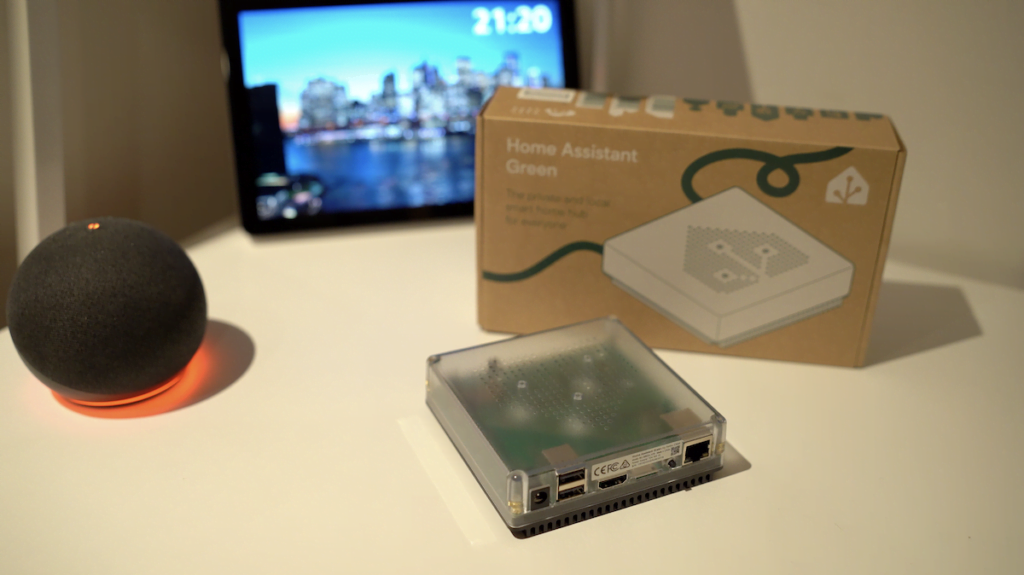
But the company Nabu Casa now offers its own Home Assistant Green hub with the Home Assistant software pre-installed.
The hub comes without any technology, leaving you free to add any technology that suits your needs, such as the Skyconnect Zigbee dongle.
Advantages
- Home Assistant pre installed: If you don’t want to spend hours learning how to install the Home Assistant software, this device is perfect for you as it comes with this software preinstalled.
- Price: Home Assistant Green costs €99.99, a very attractive price.
- Unifies the installation: with Home Assistant you avoid using different hubs and applications on your mobile phone. It brings everything together in the same interface.
- Privacy: your home data is stored locally, within your hub.
- Compatibility: Home Assistant is compatible with an infinite number of brands, devices and technologies, which is very attractive if you want to have an advanced smart home experience.
- Official Hub: Being a Hub of the founders of Home Assistant, you are guaranteed the longevity of maintaining this solution.
Disadvantages
- No Zigbee integration: you need to buy a Skyconnect Zigbee dongle or any other compatible Zigbee dongle.
- Difficult to use: Home Assistant is a powerful software that offers maximum freedom in customising the smart home, but it is not easy to use compared to other ecosystems.
- Aesthetics: Home Assistant Green is not an aesthetically appealing hub, but it is possible to hide it in a piece of furniture to be inconspicuous.
Advantages and disadvantages of the Home Centre Lite 3 hub
If you like Z-Wave technology and have been in the smart home world for a few years, you will know that FIBARO is a world leader with its quality and comprehensive devices.
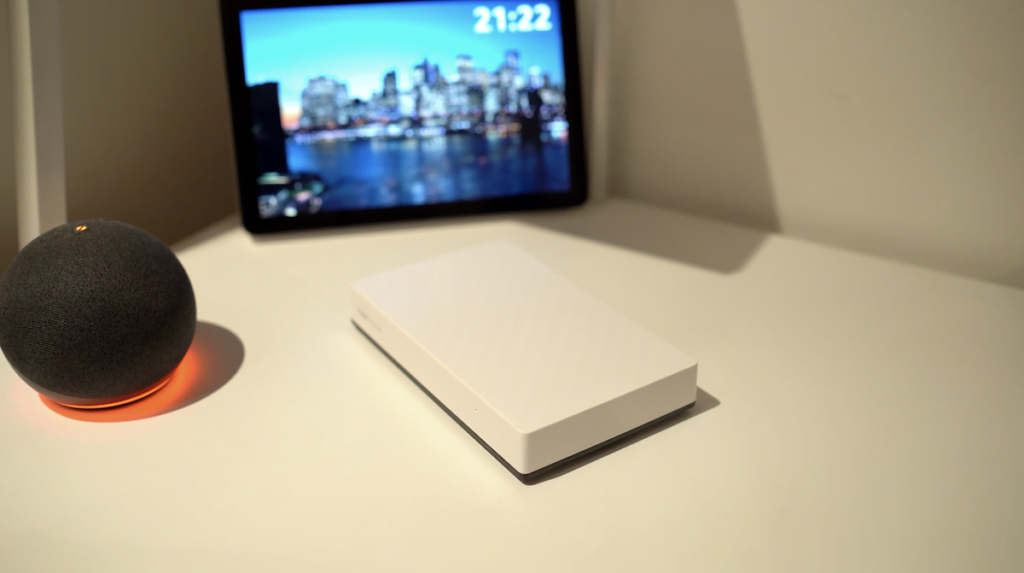
Today, with the arrival of other operators and the popularity of Zigbee technology and low-cost devices, FIBARO shares this market and is less important, but remains a very interesting option to consider.
Advantages
- Price: Home Centre Lite 3 has a very attractive price for a Z-Wave hub.
- Z-Wave technology: Z-Wave technology is powerful for a smart home thanks to all its advantages (mesh network, communication range, direct associations, status feedback and much more).
- Local use: even in the event of an Internet failure, the smart home can be controlled locally.
- Advanced FIBARO compatibility: As a FIBARO hub, compatibility with FIBARO devices is 100%.
- Pleasant interface: FIBARO takes care of the details with a user-friendly and aesthetically pleasing interface.
Disadvantages
- Does not integrate Zigbee technology: Zigbee is a very popular technology in the smart home market and this Home Centre 3 Lite only integrates Z-Wave.
- Limited features: As a ‘Lite’ model, it can integrate up to 40 Z-Wave devices, up to 20 scenes and up to 5 plugins and 10 Quick Apps, which may be enough for a small installation.
Advantages and disadvantages of the Homey PRO concentrator
Homey offers an Apple-like experience, with a very aesthetic interface and hub.

Homey PRO integrates several technologies and is a very attractive option for users who want a simple but powerful solution.
Advantages
- Integrated technologies: WIFI, Bluetooth, Z-Wave Plus, Zigbee 3.0, Thread, Matter, 433 MHz and Infrared, this Homey Pro hub allows you to customise your smart home with many brands on the market.
- Compatibility: this Homey Pro hub integrates several technologies and is compatible with an infinite number of popular brands on the market, so you have the freedom to choose your smart devices.
- Local use: without Internet, the Homey Pro smart home continues to function, a very interesting detail.
- Interface: if you are interested in an aesthetically pleasing interface, you will probably like Homey Pro.
Disadvantages
- No integrated USB port: no other technologies can be added with this hub, but it already integrates the most popular ones on the market.
- Price: this hub is not affordable.
Advantages and disadvantages of the Aqara M2 hub
Aqara is a major player in the market with quality Zigbee smart devices at generally reasonable prices.
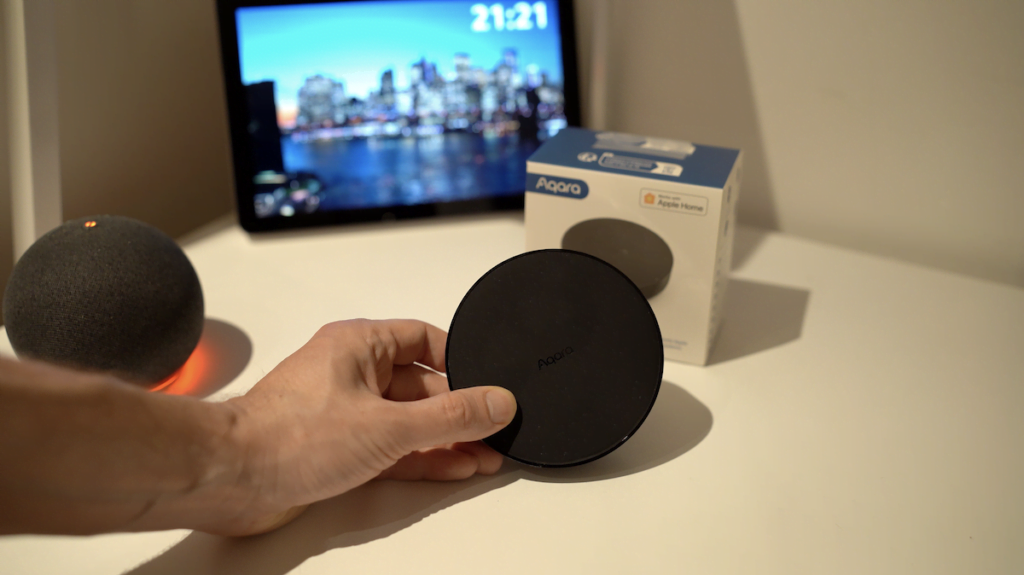
You can use these Zigbee smart devices with various universal hubs, such as Jeedom and Home Assistant, but also with the Aqara hub.
Advantages
- Advanced Aqara compatibility: As an Aqara hub, you can take advantage of Aqara smart devices with 100% of their functions.
- Price: this hub is inexpensive, which can be an important factor to consider.
- Interface: Aqara has a nice interface.
Disadvantages
- No integrated USB port: you cannot use other technologies with this Aqara hub, so you are limited to Zigbee and the Matter standard.
- Limited compatibility: although it integrates Zigbee technology, you can only use devices from the Aqara ecosystem.
- Internet dependency: without the Internet, you cannot control your smart home with this hub.
Advantages and disadvantages of the Sonoff ZB-BridgeP hub
Sonoff has established itself in the smart home market with very affordable devices that are essential for a smart home.
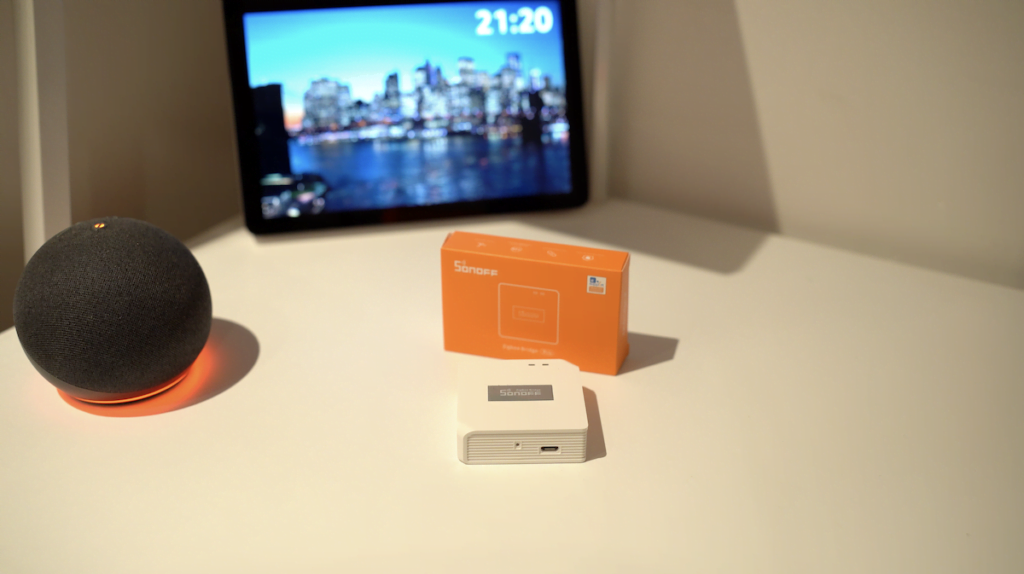
Sonoff’s Zigbee devices can be used with various hubs, such as Home Assistant and Jeedom, but also with the company’s ZB-BridgeP.
Advantages
- Advanced Sonoff compatibility: this is the hub from the Sonoff company, so it has all the options for Sonoff devices.
- Price: this hub is very cheap, so if you only want to use Sonoff devices, it may be something to consider.
- Local use: with this hub you can have local control of your smart home.
Disadvantages
- Limited compatibility: although it integrates Zigbee technology, it is limited to the use of Sonoff ecosystem devices.
- Connection via WIFI: WIFI is not the best way to connect a home automation hub, it is usually recommended to connect via Ethernet for best communication reliability, but this ZBridge-P does not allow this.
Advantages and disadvantages of the Eedomus hub
Eedomus is a hub that has existed since 2011 and is one of the oldest in the smart home market, which has evolved over time with new integrations and functionalities.
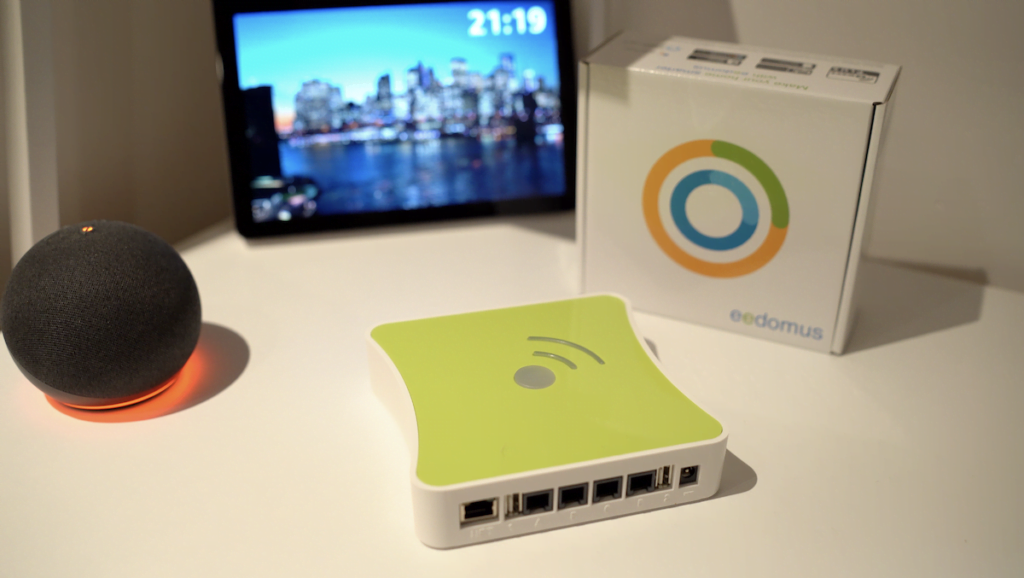
This hub is easy to use, works with Z-Wave by default, but can be integrated with other technologies thanks to its USB ports.
Advantages
- Compatibility: Eedomus is one of the solutions that offers an extensive compatibility list with several well-known brands on the market.
- Works locally: without internet, Eedomus allows you to control your smart home locally.
- Evolution: since 2011, Eedomus has been following the different market trends to integrate new functionalities and compatibility.
- Extensions: thanks to its 2 USB ports, you can take advantage of several extensions to add different technologies (Zigbee, EnOcean, 433 MHz, Somfy RTS, etc.).
Disadvantages
- Some dependence on the cloud: although you can control your smart home without the Internet, you are limited in terms of settings.
- Interface: Eedomus does not stand out because its interface is old.
- Only integrates Z-Wave: Eedomus does not integrate other technologies such as Zigbee by default, although you can take advantage of this by adding a Zigate dongle.
- Price: The price of Eedomus can be a disadvantage for many users.
Graduated with a Higher Technician’s Certificate in Home Automation, a Professional Bachelor’s degree in E-commerce and Digital Marketing, and a Master’s degree in SEO, I have been working since 2013 in a home automation e-commerce company called Domadoo, where I have the opportunity to test a large number of the popular Smart Home products on the market.